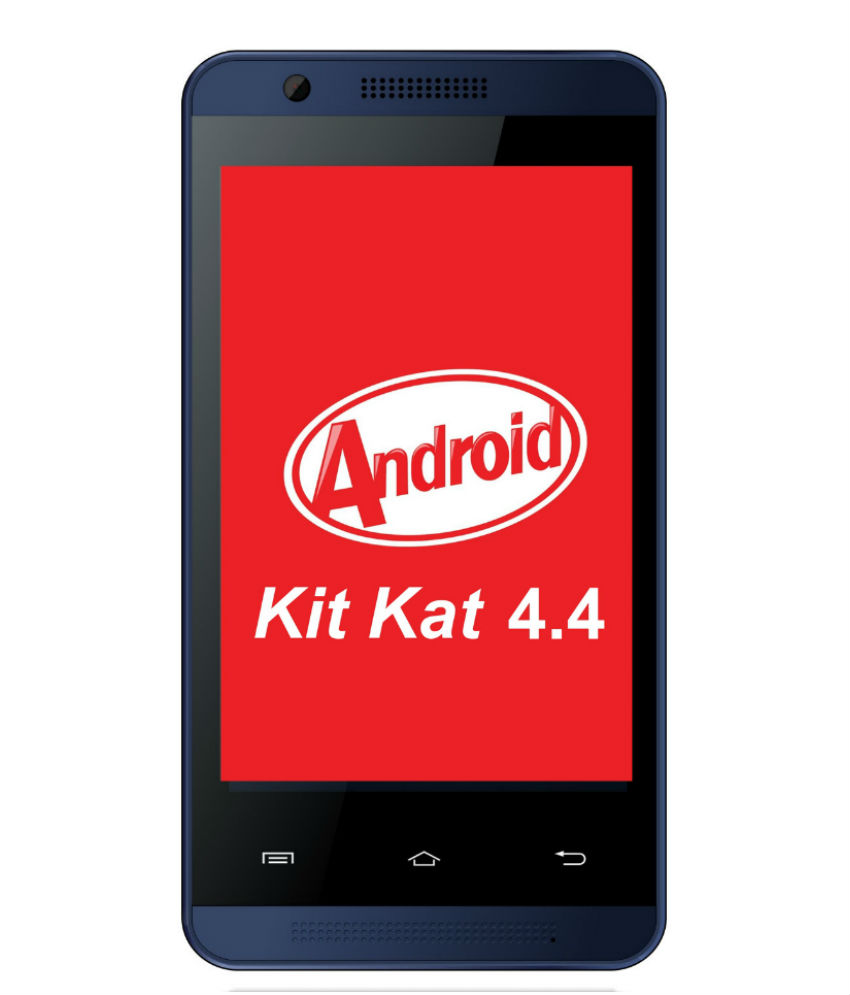Android KitKat Tests New Low-End Hardware Limits On Phone With 256 MB RAM, 1 GHz Processor
The online store Snapdeal.com from India is now offering the Celkon Campus A35k Android smartphone for only 3,000 RS, which is roughly $46 USD. What's notable about this smartphone is that it's a sub-$50 device that comes with KitKat rather than Gingerbread like many other ultra low-end smartphones before it.
With the introduction of version 4.0 Ice Cream Sandwich, Android's UI was overhauled, and it became a lot more polished than previous versions. However, it also took a step back in terms of performance, resource usage and battery life.
This is why many manufacturers, especially when it came to low-end phones, pushed back adopting Android 4.x for as long as possible. Google saw this was happening so it made an effort to make Android 4.4 KitKat as efficient as possible, especially in terms of RAM usage. Google says that KitKat will work well with devices that have 512 MB of RAM, even as most smartphones were starting to have 1 or 2 GB of RAM.
Some manufacturers seem to want to take that a step further and go even lower-end, by making devices like the Celkon Campus A35k with only 256 MB of RAM -- half the minimum recommended for KitKat by Google.
The phone also comes with only a single-core 1 GHz processor (unspecified, but most likely Cortex A8), and only 512 MB of internal storage, although it does have microSD card support. The device has only a 3.5" screen with a 480 x 320 resolution, a 3.2 MP rear camera, VGA front-camera, and a 1,400 mAh battery.
Many Indian people aren't going to be spending upwards of $600 on a flagship phone, so having the latest Qualcomm chip or as much RAM as a low-end PC isn't their immediate priority when buying a smartphone. The device working well enough (even if slower) is not a problem as long as it allows them to do the tasks they want to do on it and communicate with family and friends.
This is why local manufacturers that make Android phones have been on the rise lately in emerging markets like India, China, Eastern Europe, Latin America, Africa, and so on. Popular brands matter less than a low price for many customers in these markets.
Get Tom's Hardware's best news and in-depth reviews, straight to your inbox.
That's also why Samsung has recently lost the top spot in both India and China to Micromax and Xiaomi, respectively. In fact, Xiaomi now wants to make a big push in India, too, which it sees as a market as big as China, and wants to try to conquer it as well.
We should expect to see more sub-$50 devices as components become cheaper, local manufacturers from these emerging markets expand to other markets, and Google keeps making Android leaner and more efficient with hardware resources.
Follow us
@tomshardware, on Facebook and on Google+.
Lucian Armasu is a Contributing Writer for Tom's Hardware US. He covers software news and the issues surrounding privacy and security.
-
koolkei this is actually nice.... most people on 3rd world nation that buys really low end phones, or have really old smartphones usually either still stuck on android 2.3, or on 4.0 but laggyReply
to have kitkat available to ANY smartphone is a nice upgrade.
now the question. most people who have those lower end phone barely cares what OS they are running on, as long as it copes up to their needs. this provides the problem: low end phone that will use kitkat are going to be those which already come out with kitkat installed.... -
knowom It's sluggish enough on a 512MB phone though does feel mark ably better than Ice Cream Sandwich. I think 768MB is probably the sweet spot for KitKat 512MB is even a bit low.Reply -
atintop I have a smartphone Android 4.2 with 512mb of Ram and 1GHZ processor and it's very slow, it would be good if Google could make these phone fasterReply
____________________________________________
iphone 6 pas cher accessoires galaxy s5
